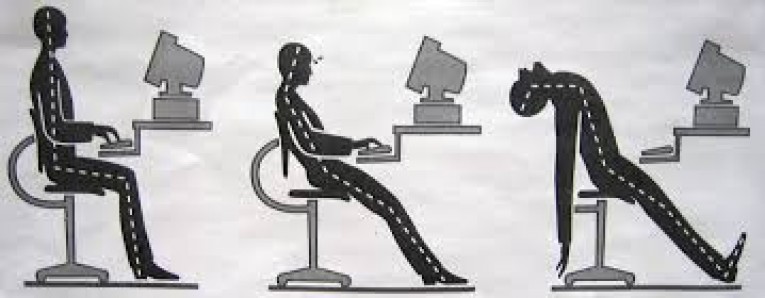Despite the funny name, Dormant Bottom Syndrome (DBS) is a real condition. It develops when your glutes, or butt muscles, lack strength, and the hip flexors – the muscles that control your hip movements – are tight. This is often the result of sitting all day behind a desk or workstation.
When you have a lazy bottom, your glutes don’t work as efficiently as they should, causing the muscles and joints around the area to compensate and absorb any shock.
DBS: are there any tell-tale signs?
In this NZ Herald article about DBS, Michael Jordan, the head coach of a Kent-based training club, says a common sign of DBS is a duck-like posture.
‘Your glutes and hip flexors are meant to hold your pelvis in position, but if the muscles in your bottom are relaxed and your hip flexors are tight, you end up with a curve at the base of your spine.’
This curve compresses the spine and can cause serious problems, like lower back pain, clicky hips and sore knees.
If you suffer from any of these, especially after exercise, you might have developed DBS. But you won’t know for sure unless you visit a professional practitioner – as osteopaths, we are perfectly placed to help you with DBS.
DBS can develop in active and inactive people
Through evolution, our bodies have been built to be active. However, unlike in our hunter-gatherer days, we do a lot more sitting today than we should, which is a common factor for DBS.
But it’s not just couch potatoes who experience DBS; athletes can too, with the repetitive nature of what they do causing the hip flexors to get tight.
How to prevent DBS
The best way to prevent DBS is to stretch the hip flexors and do exercises that strengthen and activate your glute muscles, such as squats, lunges and bridges.
Even if you already exercise regularly, you might still have weak glutes, especially if you sit down at work all day. So be sure to incorporate strengthening exercises into your routine, adding weights for more of a challenge.
And remember, when you’re sitting for long periods, make sure you take breaks to walk around as much as possible. Or get a stand-up desk so you can alternate between sitting and standing.
If you’re experiencing any knee, hip or lower back pain, book an appointment with us and we can assess what’s going on in your body and help you get back on track.
Back to blog
